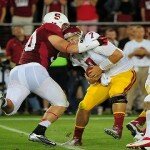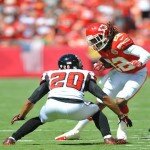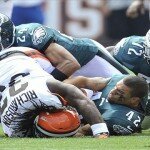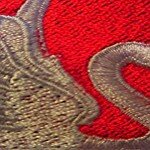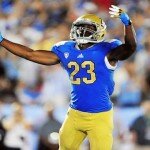A favorite activity among experts and fans is to rank the incoming recruiting classes. However, no one knows how the chips will fall and which programs will end up having the best hauls four years from now. So let’s do some ranking with the benefit of hindsight. Here is a top five ranking of the best recruiting classes from 2008 now that four years of eligibility are through.
1. Kansas Jayhawks- Quintrell Thomas was the top recruit. He transferred and has had a less than stellar career. However, Marcus and Markieff Morris made sure the frontcourt was taken care of. Both played three seasons before becoming first round draft picks. Marcus was a three year starter and scored 1,371 points in his career while Markieff did not start until his final season, but was a key contributor his entire stay in Lawrence. Then there is Tyshawn Taylor who played four years and scored 1,580 points for the Jayhawks. Travis Releford was also a contributor. Over the class’ four years, Kansas won two Big 12 Conference championships, three regular season conference championships and reached the national championship game last season. Kansas made the Elite Eight two years ago and has won at least one game in the NCAA tournament all four years. Good job, Bill Self.
2. Butler Bulldogs- Nobody had this as the second best class four years ago. However, Gordan Hayward and Shelvin Mack proved to be two of the most under-recruited players in the country. Mack played three seasons before getting drafted early in the second round of the 2011 draft. He scored over 1,500 points in his career and averaged 16 points, 4.5 rebounds and 3.4 assists while leading Butler to the national championship game in 2011. As for Hayward, an All-American in 2010, he averaged 13 points and 6.5 rebounds per game as a freshman and 15.5 points with 8.2 rebounds his sophomore season before becoming a lottery pick. Statistics do not demonstrate Ronald Nored’s incredible impact on the team, but he provided lockdown defense and energy to complement scoring by Hayward, Mack and Matt Butler. He was a “winner” and that is exactly what Butler was while the 2008 class was there. The Bulldogs made the NCAA tournament in the class’ freshman year. They then proceeded to reach two straight National Championship games.
3. Connecticut Huskies- Charles Okwandu was a contributor on the 2011 national championship team, but he is not why UCONN ranks third on this list. Kemba Walker is the reason. Not only did Walker put the Huskies on his back and lead them to a Big East Tournament championship and a National championship, he was an All-American while averaging 23.5 points, 5.4 rebounds and 4.5 assists per game. He was a starter two of his three seasons and played significant minutes his freshman season when UCONN reached the Final Four. He averaged over 16 points per game for his career before being drafted in the lottery in 2011. In the end, Walker had the best career among anyone in the 2008 class.
4. West Virginia Mountaineers- This was probably the most highly regarded class in 2008 that makes this list in 2012. The big coup for Bob Huggins was Devin Ebanks. Ebanks was an important double digit scorer for two years before leaving for the NBA. The Mountaineers also had two great four-year players, Kevin Jones and Darryl Bryant. Both significantly contributed all four years and are ranked fifth and 14th, respectively, on WVU’s career scoring list. Jones also led the Big East in rebounding his senior season as he was named a second team All-American. The Mountaineers made the NCAA tournament all four years and Jones, Bryant and Ebanks were key players on the 2010 team that won the Big East tournament and reached the Final Four.
5. North Carolina Tar Heels- The Tar Heels won a national championship in this class’ freshman year. Ed Davis was talented enough to be a big part of that team. Tyler Zeller would have had he remained healthy, but ended up doing very well in his career. Davis had two very good years before departing to be a lottery pick in the NBA. He nearly averaged a double-double his sophomore season while averaging 2.8 blocks. Zeller averaged around 16 points his final two seasons at Chapel Hill and could always be counted on to rebound and provide the occasional block. He also provided an efficient post presence and was a part of some good Tar Heel teams. UNC reached the Elite Eight in both of Zeller’s last two seasons. The reason this class is not higher is because Zeller was the only recruit who played a significant role in those Elite Eight teams and the sophomore season for both Davis and Zeller resulted in an appearance in the NIT.
Follow me on Twitter @JCJG123



